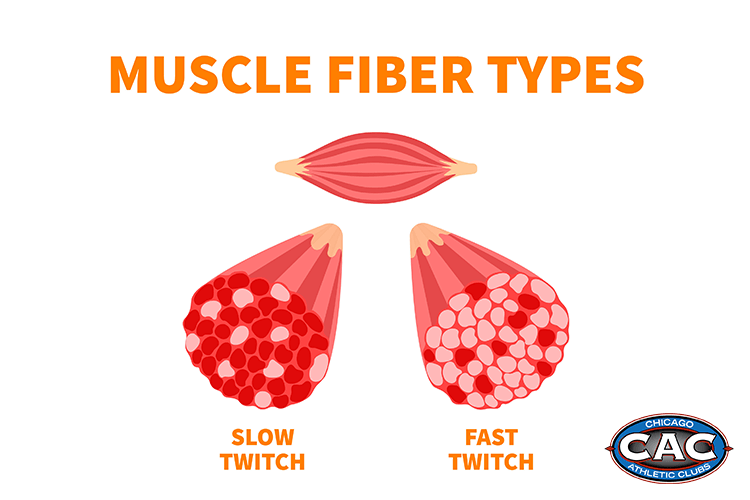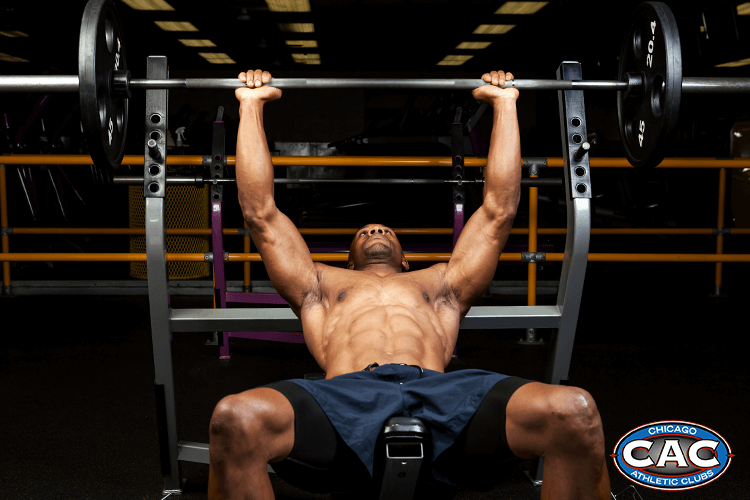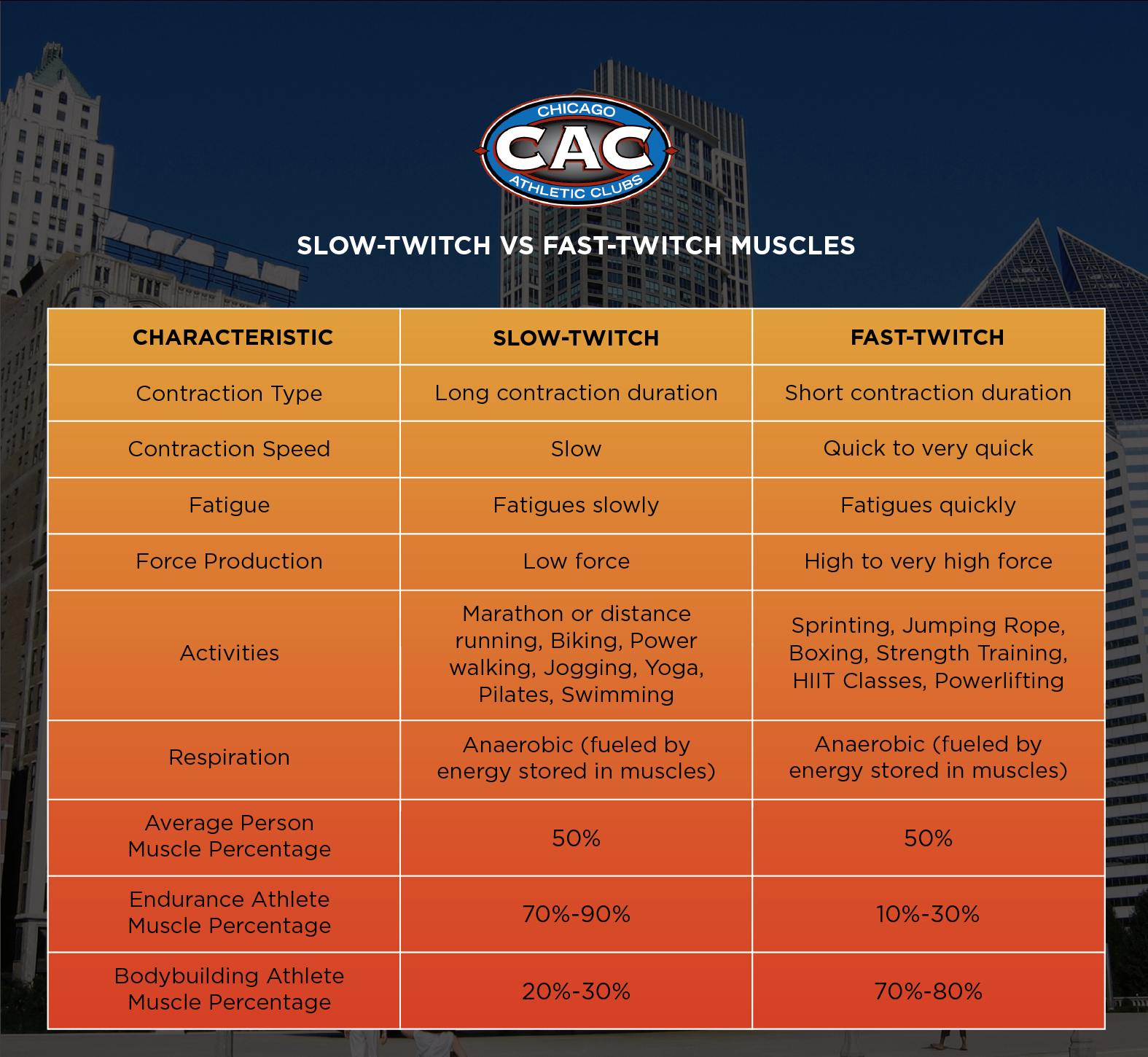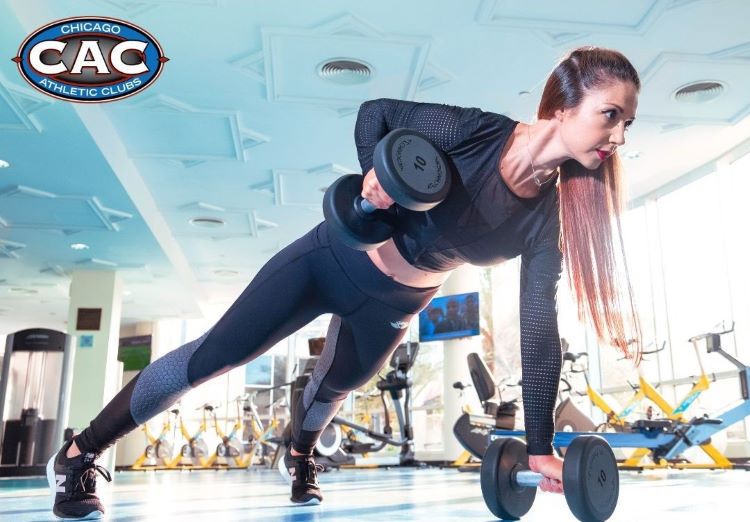MAKE A SPLASH
THIS SUMMER

Join Now For $0 Enrollment!
Learn MorePosted By: Chicago Athletic Clubs /
A major part of exercising is building muscles; however, many new and experienced workout enthusiasts are unaware of the two types of muscle fibers: slow-twitch and fast-twitch.
Muscle development is an important part of your workout routine, and understanding how different muscles develop during exercise can help you take your workout to the next level. That's why discussing fast-twitch vs slow-twitch muscles is important.
Read more to learn everything you need about slow and fast twitch muscle development.
It doesn't matter if you're working with a personal trainer or on your own, one day a week or every day, every workout is influenced by your muscles. Your muscles are made of individual stretchy fibers. Each muscle has thousands of these fibers, organized into motor units containing a motor neuron and the muscle fibers it supplies.
All muscle fibers have smaller units known as myofibrils, containing proteins actin and myosin. While all fibers contract, not all muscle fibers are identical. The predominant type of muscle fiber making up a specific muscle depends on the muscle’s function.

Calcium release in your body triggers muscle contractions after an electrical impulse from your nervous system occurs. When proteins interact, they use a cellular energy source called ATP to convert action into movement.
The two types of muscle fibers are Type I and Type II muscle fibers, which are slow-twitch and fast-twitch fibers, respectively. Depending on your exercise, these fibers can change in size. Muscle fibers contract in the following ways:
Slow-twitch muscle fibers, also referred to as Type I fibers, are muscle fibers that contract slowly. Endurance athletes often exercise these fibers in activities like long-distance running or cycling.

Slow-twitch fibers are smaller than fast-twitch muscle fibers and contain more mitochondria than the latter. These fibers generate energy aerobically with oxygen. Slow-twitch muscle fiber doesn’t get fatigued as easily as fast-twitch muscles – however, their force and speed output are typically slower than fast-twitch, type II muscle fibers.
Along with long-distance running, slow-twitch Type I fibers are used in the following activities:
Fast-twitch muscle fibers, called Type II muscle fibers, are another essential fiber contributing to muscle development through quick, powerful movements. These skeletal muscles contract faster than slow-twitch fibers, allowing athletes to perform high-intensity exercises in short bursts. Many fast-twitch muscle fibers are found in simple actions like moving your hands and eyes.

These fibers depend on anaerobic energy systems without oxygen, producing cellular energy or ATP. Two variations of fast-twitch fibers exist: fast-twitch Type IIA and Type IIB. Type IIA fibers recover faster than Type IIB fibers but do not have the same vigor as Type IIB, which create rapid and powerful contractions but tire out faster than Type IIA.
Some activities where fast-twitch muscle fibers are essential include the following:
So, what’s the main difference between fast-twitch and slow-twitch muscles? One of the core differences between these fibers is that slow-twitch fibers rely on aerobic respiration for contractions, while fast-twitch fibers rely on anaerobic respiration to fuel muscle contractions.
Whereas Type I fibers are perfect for long-term endurance exercises, Type II muscle fibers are better for quick, short-term contractions.
Slow-twitch fibers are used primarily for low-intensity exercises; in contrast, fast-twitch fibers are engaged during sudden bursts of energy and movement.
Type II uses significant amounts of energy rapidly, while Type I uses energy slowly and evenly. Type I fibers also contain more blood vessels to promote oxygen and longer endurance. If you ever work with a personal trainer, they will help you decide which type is better for you to focus on.

Which muscle fiber is better to exercise to increase muscle mass and strength? Ultimately, exercising both types of muscles will give you the best results by improving your muscle functionality.
By going to the gym and training both types of muscles, you can develop muscle mass to perform a wider range of exercises and activities and enhance your overall fitness.
Because these muscle fibers serve different purposes, you can’t have a complete workout unless you focus on exercising Type I and Type II fibers. Training both muscles also gives you more versatility in your exercises, allowing you to explore various activities for a balanced workout that reaches every part of your body.
For people looking to enhance their muscle tone, simultaneously focusing on slow- and fast-twitch muscle development is a must.
Training both types of muscles improves your overall performance and promotes injury prevention, reducing the risk of overuse injuries if you only rely on one type of fiber contraction exercise.
You can take proactive steps to achieve your workout goals by training both slow-twitch and fast-twitch muscles and reach these goals more effectively without wearing yourself out.

Building both types of muscle fibers is integral to a successful workout and can help you achieve your exercise goals. But how do you build muscle fibers for both slow- and fast-twitch muscles? Here are some ways to build both fibers.
Building fast-twitch muscle fibers is possible by prioritizing low-duration, high-intensity workouts. These muscles respond well to workouts like jump squats, stair climbing, and short sprints to build muscle mass. When using weights to build and train fast-twitch muscles, focus on lower reps at a faster speed.
Building slow-twitch fibers requires you to focus on endurance training exercises and alter specific exercises to prioritize the development of different fibers. Aerobic endurance exercises like walking, swimming, and long-distance running will help you build slow-twitch muscle fibers.
You can also use a low-weight, high-reps approach to exercise these muscle fibers, specifically when weightlifting. Take shorter resting periods when navigating this approach, and do your best to increase the time spent under muscle tension.
Now that you understand the difference between fast-twitch and slow-twitch muscles, it’s time to embark on your fitness journey! Chicago Athletic Clubs has everything you need to succeed in your new workout regimen. Find a location near you and become a member today with Chicago Athletics Club!
| Alex Card
| Chicago Athletic Clubs
| Chicago Athletic Clubs
| Chicago Athletic Clubs
| Chicago Athletic Clubs
© 2026 Chicago Athletic Clubs. All Rights Reserved. Privacy PolicyEmployee Login
https://www.chicagoathleticclubs.com/
https://www.chicagoathleticclubs.com/services/personal-training/
0
5000
true